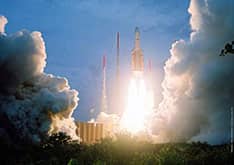Exploring French Guiana: A Unique South American Territory
Nestled on the central northern coast of South America, French Guiana presents a fascinating blend of culture and geography. This French region, bordering the Atlantic Ocean to the north, shares its international borders with Brazil and Suriname. Covering an area of 83,534 km², French Guiana is comparable to Austria but is slightly larger than the U.S. state of South Carolina. The uniqueness of this territory catches the attention of travelers and researchers alike, making it a compelling subject of study.
A Brief Historical Overview
The history of French Guiana dates back to 1604 when French settlers first arrived. For almost four centuries, this region remained relatively obscure but gained notoriety as a site for penal settlements until 1951. Interestingly, despite this dark chapter, the territory now plays a vital role in space exploration, as the European Space Agency launches its communication satellites from Kourou, French Guiana. Thus, the nation not only bears witness to historical events but also contributes significantly to modern scientific advancements.
Geographic Characteristics of French Guiana
French Guiana lies in a strategic location in Northern South America, with its borders touching Brazil to the south and Suriname to the west. The region's topography primarily consists of low-lying coastal plains interspersed with small hills and mountains, creating a diverse landscape. As visitors traverse its natural beauty, they encounter lush forests and vibrant ecosystems, making it a haven for biodiversity enthusiasts.
Climate and Natural Environment
Embracing an equatorial tropical climate, French Guiana experiences hot and humid weather year-round. The temperature exhibits little seasonal variation, providing consistent conditions that foster a diverse range of flora and fauna. Nature lovers revel in this environment, while the wealth of natural resources, including bauxite, gold, and timber, underscores the region's economic potential.
Demographics and Society
The population of French Guiana stands at approximately 250,000, according to 2014 statistics. A rich tapestry of cultures thrives here, with about 66% of the population identifying as black or mulatto. The ethnic diversity includes white individuals at 12%, as well as East Indian, Chinese, and Amerindian communities, each contributing to the multiculturalism of French Guiana. This vibrant blend of ethnicities enriches the social fabric and creates a strong sense of community among its inhabitants.
The Diversity of Languages and Religions
French remains the official language of French Guiana, reflecting its colonial history. Furthermore, the territory upholds a predominantly Roman Catholic faith, influencing many social norms and cultural practices. Despite this religious alignment, the coexistence of various communities encourages an assortment of traditions and celebrations, enriching the overall cultural landscape.
Economic Landscape and Resources
French Guiana benefits from a range of natural resources, including gold, petroleum, and kaolin. These resources play a pivotal role in driving the economy and supporting industries, such as construction, shrimp processing, and forestry products. Notably, gold mining serves as a significant economic activity, drawing both local and international interest.
Agriculture and Local Produce
Not limited to mining and natural resource extraction, French Guiana also boasts a varied agricultural sector. The fertile land produces essential crops such as corn, rice, and manioc (tapioca). Additionally, the production of sugar, cocoa, and various vegetables complements local diets and trade opportunities. The raising of cattle, pigs, and poultry supplements the agricultural landscape, showcasing the diverse food sources available in French Guiana.
Cultural Richness and Artistic Expressions
Throughout the year, French Guiana pulses with vibrant cultural expressions manifested through festivals, music, and culinary traditions. Influences from its diverse ethnic communities create a distinctive cultural identity. Traditional arts and crafts reflect the unique heritage of the territory, while modern artistic expressions continue to flourish, showcasing the dynamic nature of this region.
Investing in Tourism
Tourism serves as a burgeoning industry within French Guiana. The captivating landscapes, such as the Tumuc-Humac mountains and the coastal beaches, attract nature enthusiasts and adventure seekers. The rich biodiversity, including unique wildlife and ecosystems, invites eco-tourism. Consequently, local businesses seek to create sustainable tourism practices that benefit both residents and visitors.
Conclusion: The Allure of French Guiana
In conclusion, French Guiana emerges as a blend of historical significance, cultural diversity, and rich natural resources. From its vibrant communities to its role in space exploration, this unique territory of France has much to offer. Whether one explores its lush environments, engages with its diverse populace, or discovers its historical roots, French Guiana stands out as an intriguing destination and a vital part of South America's tapestry. This territory not only provides a glimpse into a unique cultural identity but also demonstrates the powerful connections between history, geography, and economic potential.
Largest cities of: French Guiana
| City Name | Population | Year of foundation | |
| Cayenne | 59,000 | 1664 | |
| Saint-Laurent-du-Maroni | 44,000 | 1850 | |
| Kourou | 26,000 | 1968 | |
| Matoury | 22,000 | 1963 | |
| Remire-Montjoly | 21,000 | 1964 | |
| Saint-Georges | 7,000 | 1854 | |
| Iracoubo | 5,000 | 1763 | |
| Sinnamary | 3,000 | 1852 |


